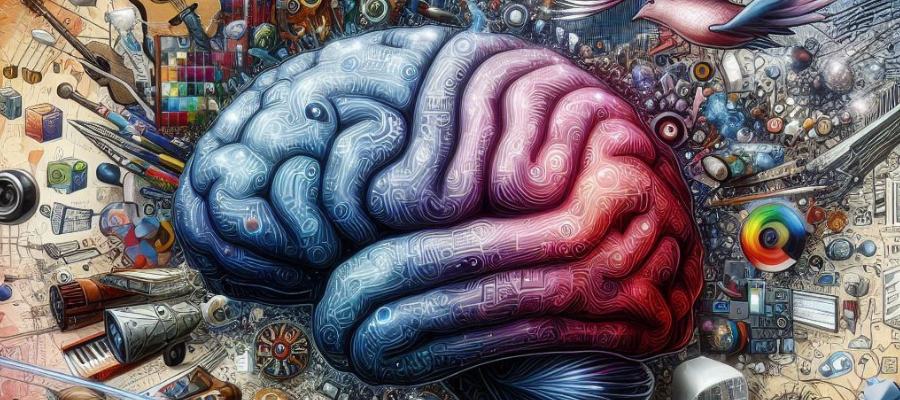
 By An AI Enthusiast
By An AI Enthusiast
In today's rapidly evolving digital landscape, Artificial
Intelligence (AI) has transformed how we think about creativity. From art
and music to writing and design, AI is becoming an essential partner in the
creative process. As someone deeply interested in the economy of ideas, I want
to explore how AI influences creativity—highlighting both the exciting
possibilities it offers and the challenges it brings.
What is AI?
AI refers to computer systems designed to perform tasks that typically require human intelligence. These tasks include understanding language, recognizing patterns, and even creating art. In the creative world, AI can analyze vast amounts of data and generate new ideas, helping artists and creators explore fresh directions. Understanding AI's role is crucial as we delve into its impact on creativity.
The Bright Side of AI in Creativity
AI acts as a powerful tool to enhance human creativity
rather than replace it. Think of AI as a helpful assistant that sparks new
ideas. For example, AI tools can analyze trends in music or literature, helping
artists create works that resonate with contemporary audiences. By
collaborating with AI, human creativity can produce innovative and relevant
results that capture attention.
AI opens doors to experimentation that many artists might
never have explored on their own. It can suggest new styles and genres,
allowing creators to venture into uncharted territory. For instance,
AI-generated music can blend various cultural elements, leading to exciting new
sounds. This spirit of experimentation nurtures innovation, keeping the
creative process dynamic and engaging.
One of the most exciting aspects of AI is how it
democratizes creativity. With user-friendly tools, anyone can engage in
creative activities, regardless of their background. Applications like DALL-E
allow users to create stunning images just by typing in descriptions. This
accessibility encourages diverse voices and ideas, enriching our cultural
landscape and making creative expression more inclusive.
AI encourages collaboration among different fields, merging
art, technology, and science. Musicians can work with AI to create unique
sounds, while visual artists can use AI-generated visuals for inspiration. This
blending of disciplines enhances creativity and leads to innovative works that
might not have emerged from traditional approaches. The collaborative nature of
AI opens new avenues for creativity.
The Challenges of AI in Creativity
While AI has many benefits, it also raises questions about
originality. As algorithms analyze existing works, there’s a risk that the art
produced may feel repetitive or lack the emotional depth of human-made
creations. Critics argue that AI-generated content can sometimes seem
formulaic. It’s essential for artists to maintain their unique voice amidst the
growing influence of AI.
The rise of AI in creative fields has led to worries about
job displacement. As AI tools become more capable of producing high-quality
content quickly, many fear that human creativity may be undervalued. This
situation prompts us to rethink what it means to be an artist in a world where
machines can generate art. Understanding the economic implications of AI is
vital for the future of creative industries.
AI's involvement in creativity introduces complex ethical
questions. When an AI creates a piece of art or music, who owns the rights? If
an artist uses AI to assist in their work, can they truly claim it as their
own? These dilemmas challenge traditional ideas about authorship and
creativity, urging us to reconsider how we define artistic identity in the age
of AI.
Another pressing concern is the potential for cultural
homogenization. As AI identifies and replicates successful patterns, there’s a
chance that creativity will lean too heavily toward popular trends. This could
dilute the rich diversity of artistic expression. It’s crucial for artists to
balance AI suggestions with their personal vision to keep the creative
landscape vibrant.
Finding the Right Balance
Navigating the relationship between AI and creativity
requires a balanced approach. By embracing AI as a supportive tool, artists can
enhance their work while preserving their unique human touch. AI can inspire
fresh ideas and simplify tasks, allowing creators to focus on what truly
matters: the emotions and stories behind their art.
Conclusion
AI’s impact on creativity is multifaceted, offering both
exciting opportunities and significant challenges. As we explore how technology
intersects with art, it’s essential to engage in discussions about AI's
implications for the creative economy. By recognizing both the positive and
negative aspects, we can create a vibrant creative environment where technology
enhances the unique contributions of artists. Ultimately, our goal should be to
celebrate human creativity while harnessing the incredible potential of AI to
explore new horizons.
Copyright @ Itsaiboss - 2024 Designed & Develop By TwinsCloud